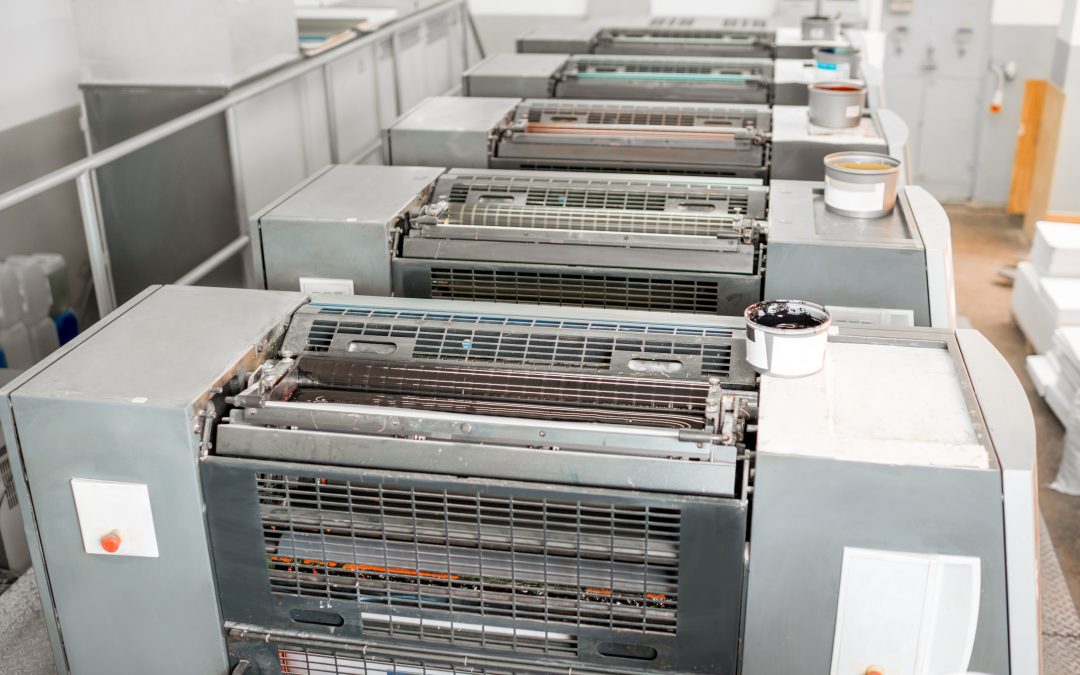The Resilience and Transformation of the Print Industry
In today’s digital age, where screens dominate our daily lives, the print industry may seem like a relic of the past. However, contrary to popular belief, the print industry has not only survived but also adapted and transformed itself to remain relevant in the modern world. In this blog post, we will explore the resilience and evolution of the print industry, highlighting its continued importance and the unique value it brings to our lives.
- The Power of Tangibility
Despite the widespread digitisation of information, print materials continue to hold a special place in our hearts. There is something inherently tangible about holding a book, flipping through its pages, or receiving a beautifully designed brochure. Print provides a sensory experience that digital media cannot replicate. The weight of a book in our hands, the texture of the paper, and the smell of ink evoke a unique emotional connection that engages our senses and enhances our reading experience.
Moreover, print offers a respite from the constant bombardment of digital notifications and distractions. It allows us to disconnect from the virtual world and engage with content in a more focused and meaningful way. Whether it’s a magazine, a newspaper, or a well-crafted marketing collateral, print has the power to captivate our attention and provide a momentary escape from the digital realm.
- Niche Markets and Specialisation
The print industry has embraced the concept of specialisation to cater to specific niches and audiences. While mass-market publications have faced challenges, there has been a rise in niche magazines and independent publications that offer unique content and perspectives. These publications focus on specific topics, hobbies, and communities, attracting passionate readers who value the depth and expertise provided by these specialised print materials.
Furthermore, print has found its place in the luxury market. High-quality printing, exquisite design, and premium materials have made print a sought-after medium for luxury brands. From high-end fashion magazines to art books and limited edition prints, print provides a tactile and exclusive experience that aligns with the aspirational nature of luxury goods.
- Print in a Digital World
Rather than being overshadowed by digital media, the print industry has learned to coexist and complement the digital world. Print materials now often serve as a physical extension of digital content. QR codes, augmented reality (AR), and interactive print techniques bridge the gap between the physical and digital realms, creating immersive experiences that engage readers in new and exciting ways.
Additionally, print marketing has proven to be effective in an era of digital noise. With inboxes flooded with emails and online ads vying for attention, direct mail campaigns have made a comeback. A well-designed and targeted print piece can cut through the clutter and make a lasting impression on recipients. Print’s ability to tangibly occupy physical space ensures it remains an impactful marketing tool.
- Sustainable Printing Practices
In recent years, the print industry has made significant strides towards sustainability. Recognizing the environmental concerns associated with traditional printing methods, the industry has embraced eco-friendly practices. From using recycled and responsibly sourced materials to adopting energy-efficient technologies, printers are actively reducing their carbon footprint.
Furthermore, advancements in digital printing technologies have enabled on-demand printing, reducing waste and minimising excess inventory. This shift towards sustainable practices has not only improved the industry’s environmental impact but has also garnered support from eco-conscious consumers who appreciate the sustainable attributes of print materials.
Contrary to predictions of its demise, the print industry has demonstrated remarkable resilience and adaptability. By harnessing the power of tangibility, embracing specialization, leveraging digital integration, and prioritising sustainability, the print industry has transformed itself to remain relevant in a rapidly evolving world.
While the digital revolution continues to shape our lives, the print industry offers a unique and valuable experience that cannot be replicated by digital media alone.

